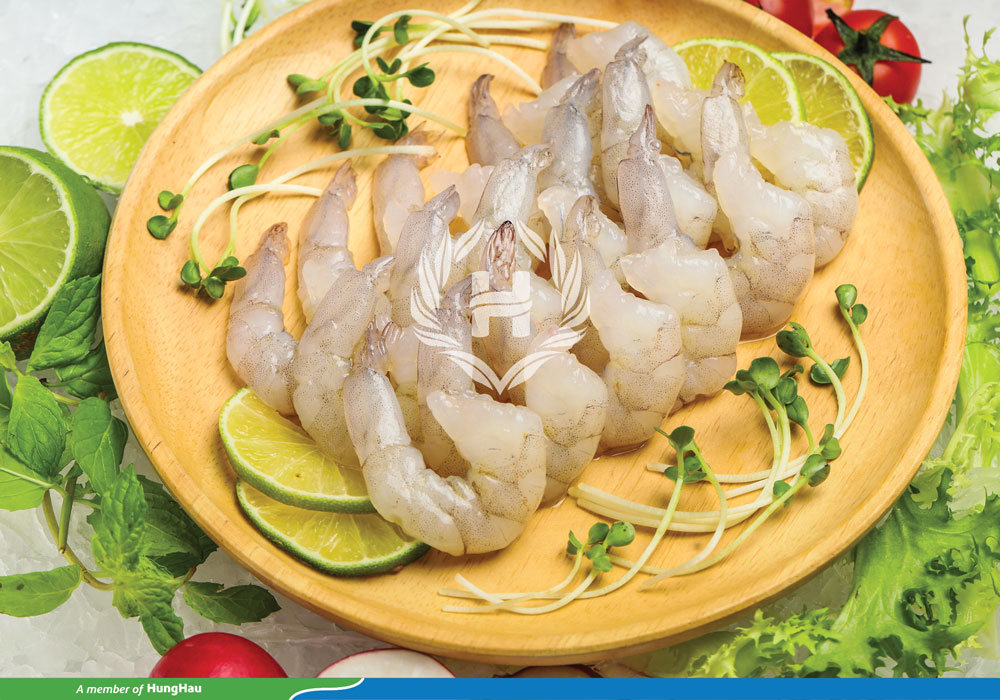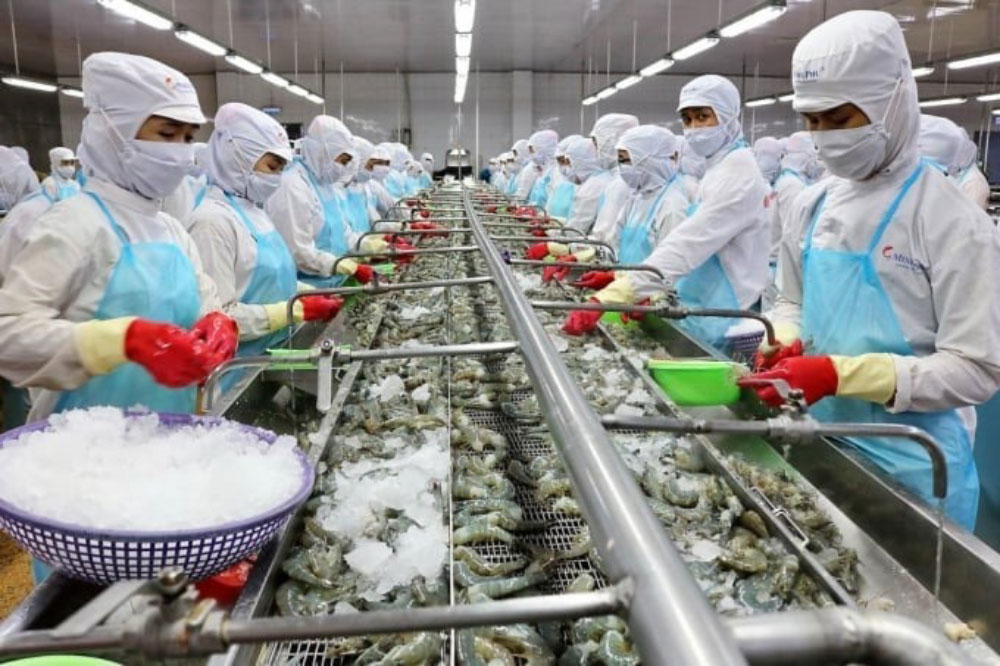Vietnam Seafood
Proposal to abolish quotas on Vietnamese shrimp imported into South Korea
As for the South Korean market, VASEP assumes that, if the quota mechanism in VKFTA is not lifted, Vietnamese shrimp will also be at risk of not having any advantage over Peruvian shrimp.
On April 15, the Vietnam Association of Seafood Exporters and Producers (VASEP) sent Official Dispatch No. 47/CV-VASEP to Prime Minister Pham Minh Chinh and respectfully sent it to Minister of Industry and Trade Nguyen Hong Dien, Minister of Agriculture and Rural Development Le Minh Hoan, and Minister of Foreign Affairs Bui Thanh Son about the proposal to abolish quotas on Vietnamese shrimp imported into South Korea.
According to VASEP, the Viet Nam-Korea Free Trade Agreement (VKFTA), which took effect at the end of 2015, is one of the important tools to help the two countries realize the goal of strengthening bilateral trade cooperation.
In recent times, the agreement has had a positive impact on Vietnam’s main export products to South Korea, including seafood. Specifically, Vietnamese seafood exports to South Korea have increased by 62%, from USD 585 million in 2015 to USD 950 million in 2022 and USD 786 million in 2023.
2024 is the 10th year of implementing VKFTA. According to the roadmap, most seafood products have a tax rate of 0%. However, according to quota commitments at Appendix 2A-1 on South Korea’s tariff quota management in the VKFTA Document, there are still 7 groups of seafood products (corresponding to 7 HSK codes: 0306161090, 0306169090, 0306171090, 0306179090, 0306261000, 0306271000, and 1605219000) imported from Vietnam into South Korea that only enjoy tariff preferences according to quota (currently 15,000 tons/year).
To be more specific, for these groups, South Korea only exempts Vietnam from import tax under VKFTA for 15,000 tons/year (quota level applied from 2020 onwards). The volume of imported products exceeding the quota will not enjoy preferential tariffs under VKFTA but will be subject to a tax base of 20%.
According to South Korean import statistics (kita.org), the total import volume of the above-mentioned 7 product lines from Vietnam into South Korea in the period 2016–2023 ranges from 22,500–36,300 tons, corresponding to the tax-free quota excess of 12,500–21,300 tons/year.
Specifically, in 2022, the volume of Vietnamese shrimp imports from 7 HSK codes into South Korea was 36,265 tons, exceeding the tax-free quota by 21,265 tons; in 2023, the import volume was 29,944 tons, exceeding 14,944 tons.
Thus, for this key shrimp product alone, in the 2016–2023 period, 34–48% of Vietnamese shrimp output imported into South Korea is subject to an out-of-quota tax of 20%.
This means importers no longer have any motivation to increase purchases of Vietnamese shrimp to serve the growing demand in South Korea. Instead of that, they are considering buying more shrimp from other countries (such as Peru) that also have a free trade agreement (FTA) with South Korea, but the import tax rate has been reduced to 0% with a roadmap of 5-7 years under the FTA with South Korea. This eliminates all tariff advantages from VKFTA for these Vietnamese frozen shrimp products in the South Korean market.

In the last 3 years, with HSK code 0306171090 alone, the amount of Peruvian shrimp imported into South Korea has increased significantly, while in 2023, the amount of shrimp imported from Vietnam has decreased by approximately 6,000 tons. This difference is mainly because the Peru-Korea FTA does not stipulate tariff quotas like in the VKFTA.
Under the impact of the Peru-Korea FTA, which has now completed the tax elimination roadmap, the risk of Vietnamese shrimp losing market share in South Korea is predictable if Vietnamese shrimp continue to be imported under the quota mechanism with an “actual tax/cost” of about 20% compared to the 0% no-quota preferential tax rate of Peruvian shrimp as presently.
On a global level, Vietnamese shrimp are finding it very hard to compete on output and price with Indian, Ecuadorian, and Indonesian shrimp in the US, China, and EU markets. As for the South Korean market, if the quota mechanism in VKFTA is not lifted, Vietnamese shrimp will also be at risk of not having any advantage over Peruvian shrimp.
Meanwhile, compared to Vietnam’s most updated import tariff schedule (2024), all seafood product lines imported from South Korea to Vietnam enjoy a tax rate of 0%. Thus, Vietnam is completely open to South Korean seafood but, in return, is still subject to quotas on shrimp exports to South Korea.
Faced with this situation, considering a proposal with South Korea to remove the tariff quota mechanism for Vietnamese frozen shrimp under VKFTA is very urgent to protect the market share and long-term benefits of Vietnamese shrimp in this market. From a legal perspective, this is a mechanism that has been planned in VKFTA with the commitment at Clause 2, Article 2.3, Chapter 2 of the VKFTA Document (on the consultation process to eliminate tariffs sooner than the current commitment). From a practical perspective, the possibility of this proposal being supported by the South Korean side is very high in the context that this country is facing challenges of high inflation and skyrocketing food prices, and the South Korean government has had to proactively reduce import tax on some commodities and seems to be willing to consider other solutions to help reduce imported food prices, such as consultation on VKFTA tariff adjustments.
(Source: https://vietfishmagazine.com/)



 Tiếng Việt
Tiếng Việt